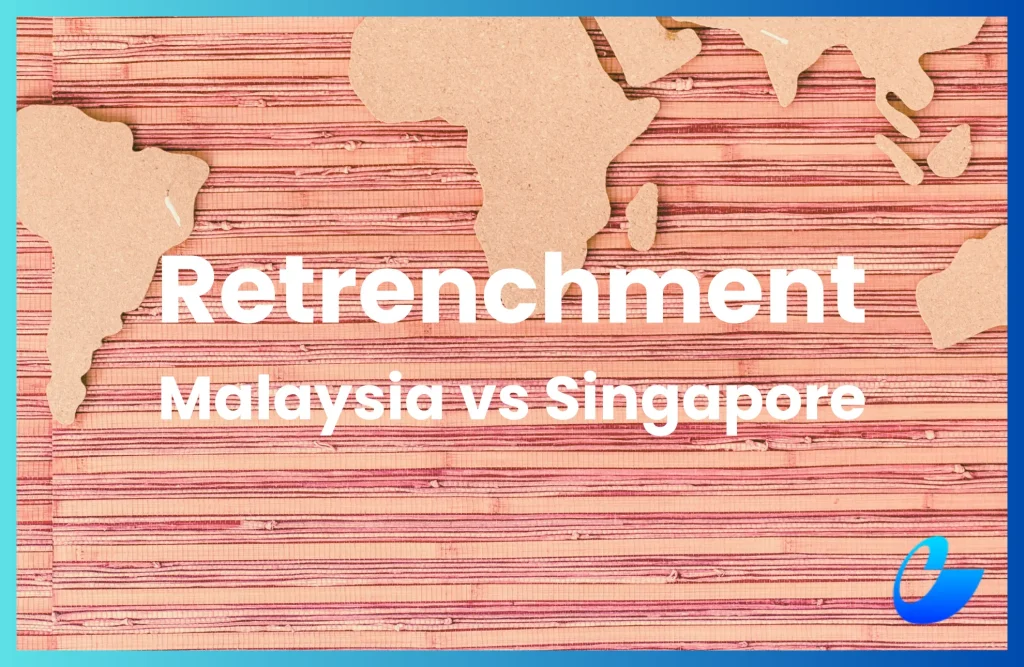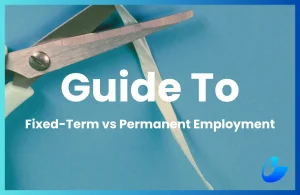Disclaimer:
This article is intended for general informational purposes only. The Malaysia-related content is based on Malaysian law, while references to Singapore are drawn from publicly available sources and do not represent legal advice on Singapore law. Readers are encouraged to seek independent legal advice in their respective jurisdictions before taking any employment-related action.Retrenchment, or workforce reduction due to redundancy, is recognised as a valid reason for termination in both Singapore and Malaysia. However, specific employer obligations differ, and for Singaporean businesses expanding into Malaysia, understanding these differences is crucial.
As this has been a frequent enquiry for us, we’ve created this guide as a concise and accessible resource explaining how retrenchment procedures differ between both countries, focusing on:
- guidelines
- notice requirements
- retrenchment benefits
By the end, Singaporean business owners and decision makers will have a clear picture of how to manage workforce changes in Malaysia responsibly and in full compliance with the law.
Singapore
In Singapore, the Ministry of Manpower (MOM) promotes responsible retrenchment through tripartite advisory guidelines which encourages employers to:
- explore alternatives first such as redeployment, shorter workweeks, or voluntary separation
- communicate early and clearly with employees to maintain transparency
- apply objective selection criteria, such as ability, experience, and skills to avoid perceptions of unfair treatment
Notification to authority
If retrenchment is unavoidable:
- employers with at least 10 employees must notify MOM if any employee is retrenched, within 5 working days after informing the affected employee(s)
- employers with fewer than 10 employees are not legally required to submit the notification but are encouraged to do so as a good practice
Notice period
The notice period for retrenchment follows the terms stated in the employee’s contract or the Employment Act if no specific term is provided:
- less than 26 weeks’ service: 1 day
- 26 weeks to <2 years: 1 week
- 2 to <5 years: 2 weeks
- 5 years or more: 4 weeks
Employers may opt to provide salary in lieu of notice instead of requiring employees to serve the full notice period.
Retrenchment benefits
There is no statutory requirement for retrenchment benefits under Singapore law. Whether an employee receives compensation depends on the employment contract or company policy, and is typically determined through mutual agreement between employer and employee.
In practice, many companies provide two weeks to one month’s salary per completed year of service, depending on the company’s financial position and industry norms. Some employers may also offer ex-gratia payments for employees with shorter service periods.
Malaysia
In Malaysia, retrenchment must be carried out in good faith and for “just cause and excuse.” Employers are expected to adopt fair and transparent procedures when implementing workforce reductions, ensuring that decisions are genuine and not motivated by ulterior reasons.
The Code of Conduct for Industrial Harmony (CCIH), while not legally binding, serves as an important guideline for fair retrenchment practices recognised by the Industrial Court. The CCIH encourages employers to:
- consider alternatives such as redeployment, reduced workweeks, or voluntary separation
- use objective selection criteria (e.g., performance, years of service, skills
- communicate clearly and early with affected employees.
Employers who fail to follow these principles risk facing claims that the retrenchment was unfair or without just cause.
Notification to authority
Unlike Singapore, there is no minimum number of affected employees that triggers a statutory reporting threshold in Malaysia.
Employers are required to notify the Labour Office by submitting a retrenchment notification form (Borang PK) at least 30 days before the intended termination date.
Notice period
Malaysia’s Employment Act 1955 also requires employers to give written notice depending on the employee’s length of service, but with relatively longer notice periods:
- less than 2 years: 4 weeks’ notice
- 2 to 5 years: 6 weeks’ notice
- more than 5 years: 8 weeks’ notice
Again, if the employment contract specifies a longer notice period, that contractual period will apply. Employers may also opt to pay salary in lieu of notice if they wish to end employment immediately.
Retrenchment benefits
If they have at least 12 months of continuous service with the employer, employees earning RM4,000 and below per month or those engaged in manual labour are statutorily entitled to retrenchment benefits under the Employment Act 1955 and the Employment (Termination and Lay-Off Benefits) Regulations 1980 .
These benefits are calculated between 10 to 20 days’ wages for each year of service, depending on the employee’s length of service:
- less than 2 years’ service: 10 days’ wages per year of service
- 2 to 5 years’ service: 15 days’ wages per year of service
- more than 5 years’ service: 20 days’ wages per year of service
For employees earning above RM 4,000, retrenchment payments are determined by the employment contract or by mutual agreement between the parties.
Takeaways
Here’s a summary of key differences in retrenchment obligations in Singapore and Malaysia:
| Aspect | Singapore | Malaysia |
| Notification | Notify MOM within 5 working days if ≥10 employees are employed by the company; optional if fewer. | Submit Borang PK to the Labour Office 30 days before termination; applies regardless of number affected. |
| Notice period |
Based on length of service (or as specified in the employment contract): <26 weeks: 1 day 26 weeks–<2 yrs: 1 week 2–<5 yrs: 2 weeks ≥5 yrs: 4 weeks |
Based on length of service (or as specified in the employment contract): <2 yrs: 4 weeks 2–5 yrs: 6 weeks >5 yrs: 8 weeks |
| Benefits | No statutory requirement |
Statutory for employees earning RM4,000 or below or manual workers: <2 yrs: 10 days/year 2–5 yrs: 15 days/year >5 yrs: 20 days/year |
Implications for Singaporean businesses expanding into Malaysia
Comparing the two, Malaysian employment law provides more statutory safeguards for employee, while Singapore’s system seems to adopt a more flexible, market-driven approach that gives employers (and in theory employees) greater freedom in deciding on employment terms.
Both frameworks have their own merits and trade-offs, but ultimately, businesses operating abroad must always adhere to the employment laws of the country they operate in.
Conclusion
Retrenchment should always be handled with care, transparency, and fairness to ensure compliance and preserve trust. For multinational employers, it remains essential to localise global retrenchment policies to align with each country’s labour laws and local employment culture.










